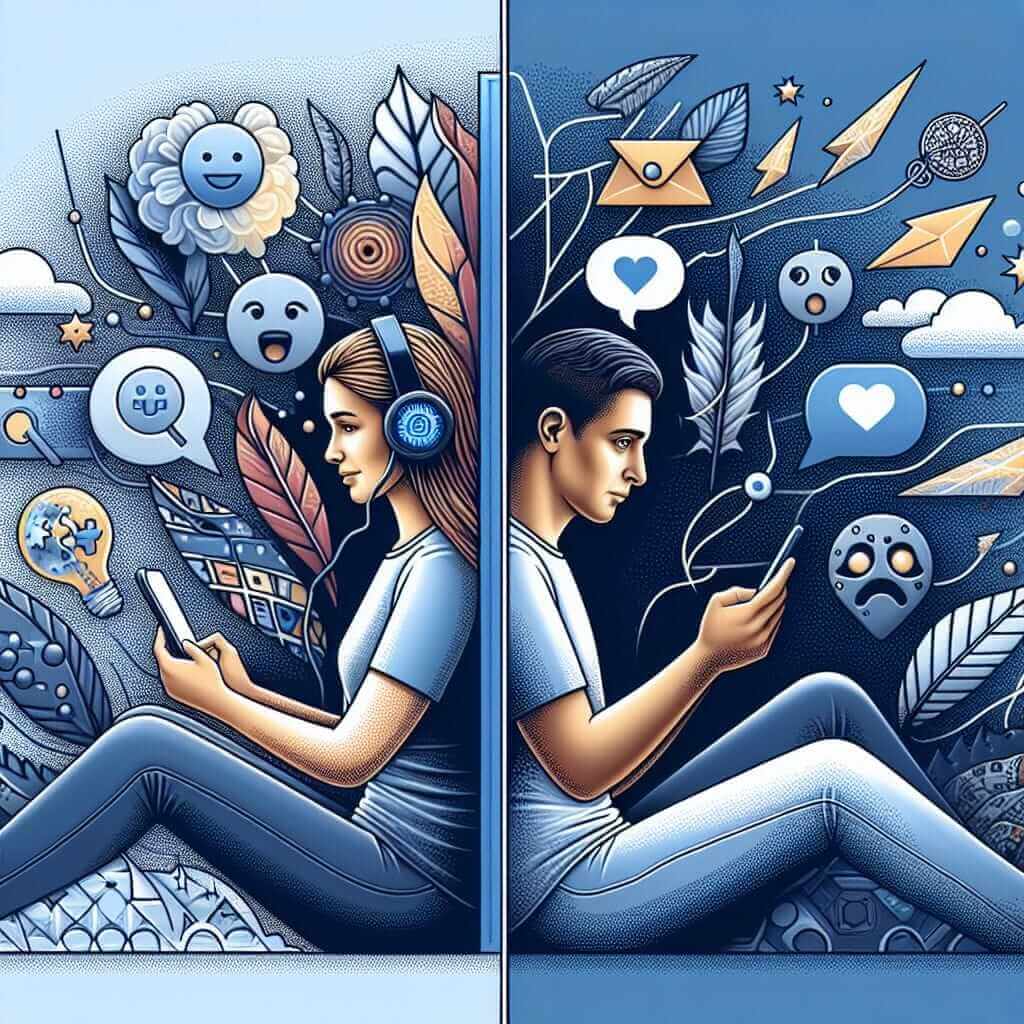The IELTS Reading exam is designed to test a candidate’s reading abilities and comprehension. Candidates are expected to read passages and answer a variety of questions, such as multiple-choice questions, identifying information (True/False/Not Given), matching headings, and summarizing. The topic “How is technology affecting global mental health trends?” is highly relevant and frequently discussed due to the rapid advancement and pervasive influence of technology. Given the rise of digital platforms and social media, this topic is timely and likely to be featured in future IELTS Reading exams.
Main Content
Practice IELTS Reading Passage
Reading Passage
How Technology is Shaping Global Mental Health Trends
With the proliferation of smartphones, social media, and online services, technology has become a significant part of daily life, consequently affecting global mental health trends. While technological advancements bring numerous benefits, they also introduce challenges and potential health issues that must be addressed.
One prominent benefit of technology is the increased accessibility to mental health resources. Online therapy, mental health apps, and support groups can provide crucial assistance, especially in regions with limited access to traditional mental health services. Teletherapy has seen a surge, especially during the COVID-19 pandemic, as in-person sessions became difficult for many.
However, the dark side of technology cannot be overlooked. Social media platforms are often criticized for their role in exacerbating mental health issues. Exposure to unrealistic standards, cyberbullying, and the pressure to constantly present a curated life can lead to depression, anxiety, and other mental health challenges. Additionally, excessive screen time, particularly among children and adolescents, is linked to sleep disturbances, reduced physical activity, and diminished social skills.
Furthermore, studies show a correlation between the use of technology and rising stress levels. Constant connectivity can lead to information overload and a blurring of the lines between work and personal life, thereby increasing stress and burnout. There is also substantial evidence that points to technology’s role in the increase of attention disorders, as constant notifications and multitasking diminish the ability to focus.
As we navigate the digital age, it is crucial to develop strategies to mitigate the negative impacts of technology on mental health. Educating individuals on the responsible use of technology, fostering digital well-being, and promoting offline activities and real-life social interactions are essential. Public health policies must also evolve to address the mental health challenges posed by the digital era.

Questions
1. Multiple Choice:
Which of the following is NOT mentioned as a benefit of technology for mental health?
- A) Increased accessibility to mental health resources
- B) Enhanced real-life social interactions
- C) Teletherapy sessions
- D) Mental health apps
2. Identifying Information (True/False/Not Given):
- i. Online therapy has grown in popularity due to the COVID-19 pandemic.
- ii. Social media is beneficial for everyone’s mental health.
- iii. Excessive screen time can lead to sleep issues among adolescents.
3. Matching Headings:
Match the following headings to their appropriate sections in the passage.
-
- Benefits of Technology for Mental Health
-
- Negative Impacts of Social Media
-
- Increasing Stress due to Constant Connectivity
4. Sentence Completion:
Complete the sentences below with words taken from the passage.
- i. The increased use of ___ has been linked to higher stress and burnout.
- ii. Responsible use of technology involves promoting ___ activities.
5. Short-answer Questions:
Answer the following questions in no more than three words.
- i. What is linked to sleep disturbances and reduced social skills?
- ii. What kind of policies need to evolve to handle digital age mental health challenges?
Answer Keys
-
Multiple Choice:
B Enhanced real-life social interactions -
Identifying Information (True/False/Not Given):
- i. True
- ii. False
- iii. True
-
Matching Headings:
-
- Benefits of Technology for Mental Health: Paragraph 2
-
- Negative Impacts of Social Media: Paragraph 3
-
- Increasing Stress due to Constant Connectivity: Paragraph 4
-
-
Sentence Completion:
- i. technology
- ii. offline
-
Short-answer Questions:
- i. excessive screen time
- ii. public health
Lessons Learned
Common mistakes when answering these types of questions include misinterpreting the information given, failing to identify keywords, and not understanding the question requirements. It’s crucial to read carefully and look for synonyms and paraphrased ideas that match the questions.
Vocabulary
Here are some challenging words from the passage, complete with their parts of speech, pronunciations, and meanings:
- Proliferation (noun) /prəˌlɪfəˈreɪʃən/: rapid increase in numbers
- Exacerbating (verb) /ɪɡˈzæsərˌbeɪtɪŋ/: making a problem or negative feeling worse
- Curated (adjective) /kjʊˈreɪtɪd/: carefully selected and managed
- Mitigate (verb) /ˈmɪtɪˌɡeɪt/: make less severe, serious, or painful
Grammar
A grammar structure worth noting is the use of Relative Clauses to combine two pieces of information into one sentence.
Example:
“Teletherapy, which has seen a surge during the COVID-19 pandemic, provides an essential service.”
Structure:
Main Clause + Relative Pronoun + Relative Clause
Example:
“Excessive screen time, particularly among children and adolescents, is linked to sleep disturbances.”
Structure:
Main Clause + Relative Pronoun + Relative Clause
Advice
Consistent practice with varied types of passages is key to achieving a high score in the IELTS Reading section. Focus on expanding your vocabulary and understanding complex sentence structures. Practice identifying key information and assessing the writer’s purpose and tone.
Lastly, balance your screen time with offline activities to maintain your mental health and overall well-being while preparing for the IELTS.
By following these strategies and practicing with passages like the one above, candidates can better prepare themselves for the IELTS Reading section and improve their comprehension and analytical skills.